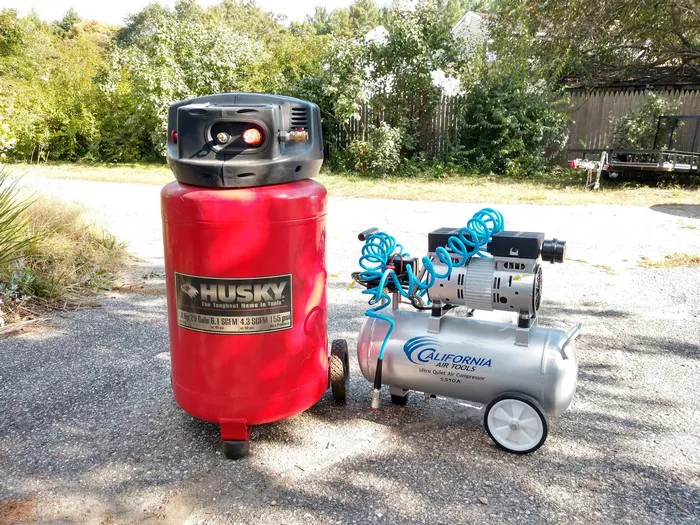Air compressors are an essential tool in various industries, from automotive workshops to large-scale manufacturing plants. One of the most critical parameters in understanding air compressor performance is SCFM. This term frequently appears in product descriptions and manuals, but many users find it confusing. In this article, we’ll explore what SCFM stands for, its importance, how it differs from other measurements, and how to calculate it.
What Is SCFM?
Definition of SCFM
SCFM stands for Standard Cubic Feet per Minute. It is a measurement of the flow rate of air or gas, normalized to a set of standard conditions. This normalization ensures that comparisons between different compressors or systems are consistent and not influenced by environmental factors like temperature, pressure, and humidity.
The Role of Standard Conditions
The term “standard” refers to a predefined set of conditions used for measurement. These typically include:
- Temperature: 68°F (20°C)
- Pressure: 14.7 psi (1 atmosphere)
- Relative Humidity: 36%
These conditions serve as a baseline, allowing manufacturers and users to understand how much air a compressor can deliver under typical circumstances.
Why Is SCFM Important in Air Compressors?
Accurate Performance Comparison
SCFM provides a standardized method for comparing different air compressors. Without this normalization, variations in environmental conditions could lead to misleading performance claims.
Ensuring Proper Tool Operation
Many pneumatic tools, such as drills, sanders, or paint sprayers, require a specific SCFM to function efficiently. Knowing the SCFM output of your compressor ensures compatibility and optimal performance.
System Design and Efficiency
SCFM is vital in designing pneumatic systems. It helps engineers calculate the required capacity to meet operational demands without overloading the system or wasting energy.
How Is SCFM Different from Other Airflow Measurements?
SCFM vs. CFM
While SCFM represents airflow under standardized conditions, CFM (Cubic Feet per Minute) refers to the actual flow rate at current conditions. CFM can vary based on:
- Temperature fluctuations
- Atmospheric pressure differences (e.g., at higher altitudes)
- Humidity levels
In contrast, SCFM adjusts these variables to standard conditions, providing a more reliable metric for comparison.
SCFM vs. ACFM
ACFM (Actual Cubic Feet per Minute) measures airflow at the specific conditions of the environment in which the compressor operates. Unlike SCFM, it does not account for standardization. ACFM values are typically lower than SCFM because of adjustments for non-standard conditions.
How Is SCFM Measured and Calculated?
Key Variables in SCFM Calculation
To calculate SCFM, the following variables are essential:
- Pressure: The operating pressure of the system
- Temperature: The ambient temperature during operation
- Relative Humidity: The moisture content in the air
- Volume: The volume of air being compressed
The General Formula
A simplified formula for calculating SCFM is:
SCFM=ACFM×P×TstdPstd×T\text{SCFM} = \text{ACFM} \times \frac{\text{P} \times \text{T}_{\text{std}}}{\text{P}_{\text{std}} \times \text{T}}
Where:
- P = Absolute pressure at operating conditions
- T = Absolute temperature at operating conditions
- Pstd_\text{std} = Standard absolute pressure (14.7 psi)
- Tstd_\text{std} = Standard absolute temperature (528°R or 68°F in Rankine)
Using SCFM Meters
Many industries use specialized SCFM meters for direct measurement. These devices account for environmental factors and display the standardized value automatically.
Factors Influencing SCFM
Ambient Temperature
Higher temperatures decrease air density, leading to lower SCFM output. Conversely, colder air increases density and SCFM.
Altitude and Atmospheric Pressure
At higher altitudes, atmospheric pressure decreases, which reduces SCFM. Compressors operating at sea level generally have higher SCFM ratings.
Moisture and Humidity
High humidity levels increase water vapor in the air, reducing the effective SCFM. Compressors may include air dryers to minimize this effect.
How to Choose an Air Compressor Based on SCFM
Assess Your Tool Requirements
Determine the SCFM demand of the tools you plan to use. For example:
- Impact wrenches: 3–5 SCFM
- Paint sprayers: 6–12 SCFM
- Sanders: 8–12 SCFM
Consider System Losses
Include a buffer for potential air losses due to leaks or system inefficiencies. A good rule of thumb is to select a compressor with 25–30% more SCFM capacity than your tools require.
Account for Simultaneous Tool Use
If multiple tools will operate simultaneously, add their SCFM requirements to determine the total demand.
Common Misconceptions About SCFM
“Higher SCFM Means Better Performance”
While a higher SCFM rating indicates greater airflow, it doesn’t necessarily mean better performance for your application. The compressor’s pressure output (measured in PSI) must also align with your tool’s requirements.
“SCFM and CFM Are Interchangeable”
Using CFM instead of SCFM for decision-making can lead to compatibility issues. Always ensure you’re comparing SCFM values when selecting compressors.
“SCFM Is Constant”
SCFM ratings can vary slightly between manufacturers due to differences in how they define “standard” conditions. Always check the specific parameters used in the calculation.
Tips for Optimizing SCFM in Your Air Compressor System
Regular Maintenance
Keep filters, valves, and hoses clean and free of blockages to ensure consistent airflow.
Use Air Dryers
Minimizing humidity in the system helps maintain accurate SCFM output.
Monitor Environmental Conditions
Be aware of changes in temperature, pressure, and humidity that could affect your compressor’s performance.
Check for Leaks
Inspect the system regularly for leaks, which can significantly reduce effective SCFM.
The Future of SCFM Measurement
Advanced Sensor Technology
Modern air compressors are increasingly equipped with smart sensors that monitor SCFM in real-time, adjusting for environmental factors dynamically.
Energy-Efficient Systems
Manufacturers are focusing on compressors that maintain high SCFM output while consuming less energy, catering to industries prioritizing sustainability.
Conclusion
SCFM is a critical metric for understanding and optimizing air compressor performance. By standardizing airflow measurements, it enables accurate comparisons, ensures compatibility with pneumatic tools, and aids in efficient system design. Whether you’re purchasing a compressor for a small workshop or a large industrial application, understanding SCFM will empower you to make informed decisions.
With proper maintenance and consideration of environmental factors, you can maximize the efficiency and longevity of your air compressor, ensuring reliable performance for years to come.
Related topics:

